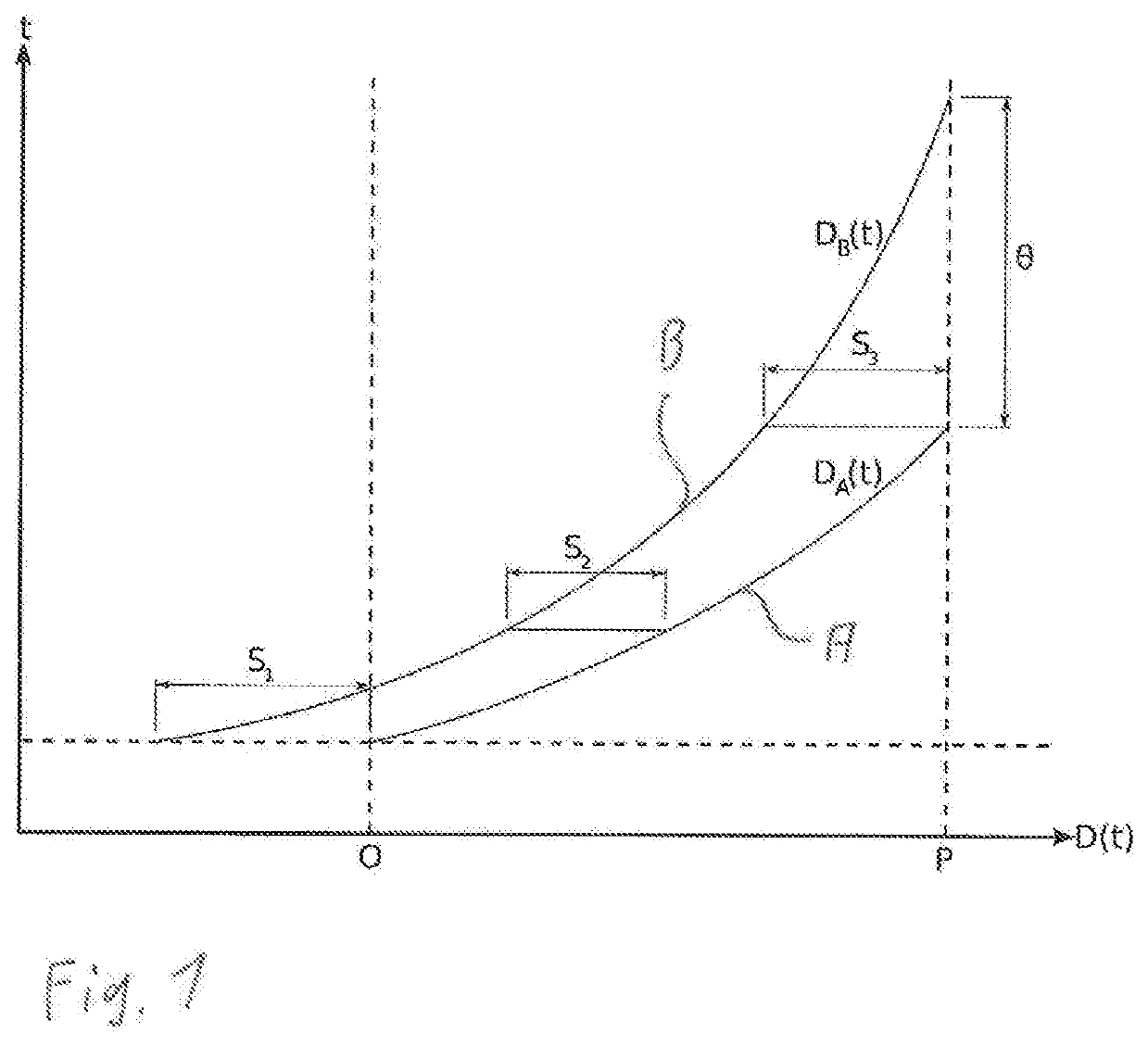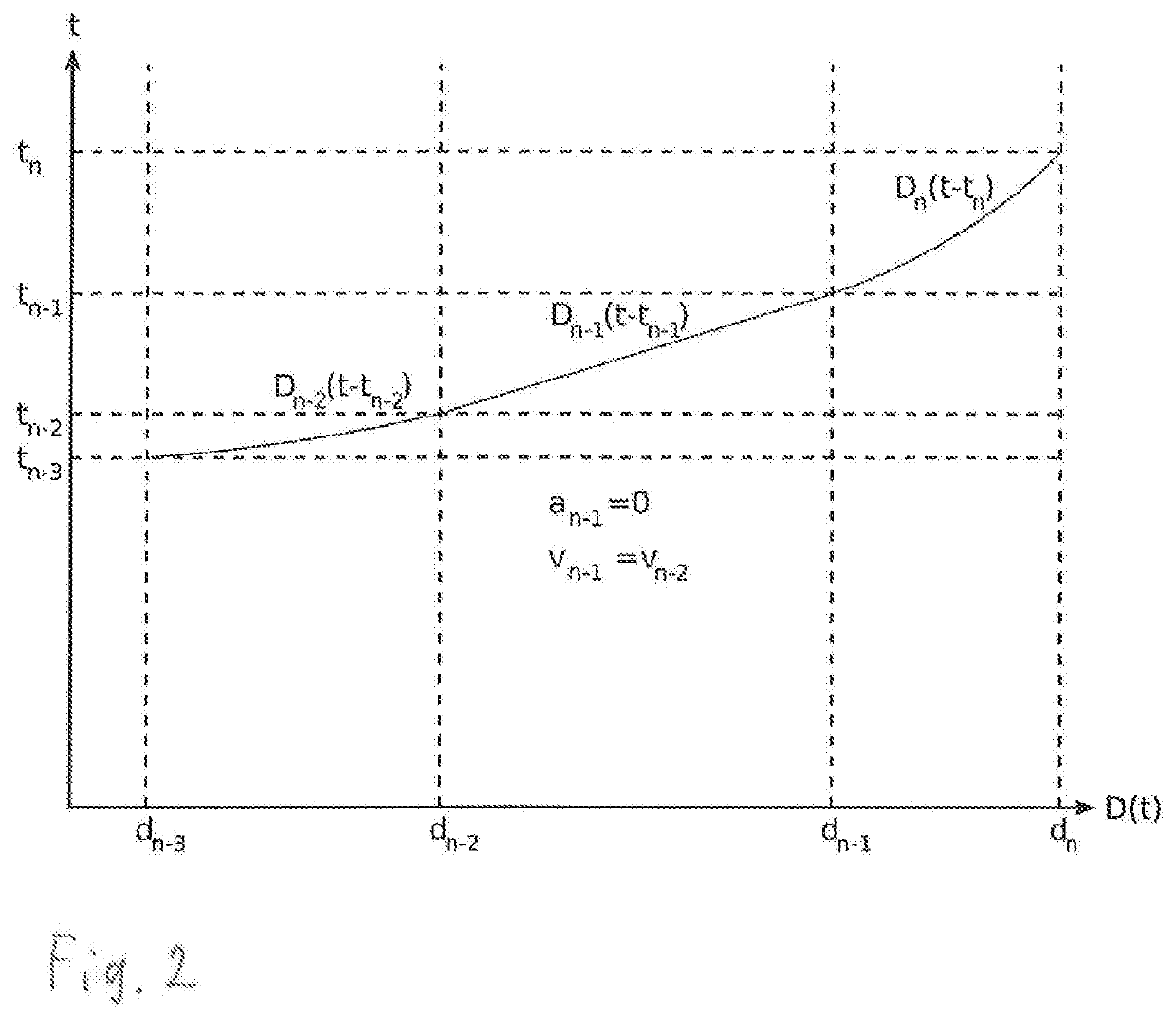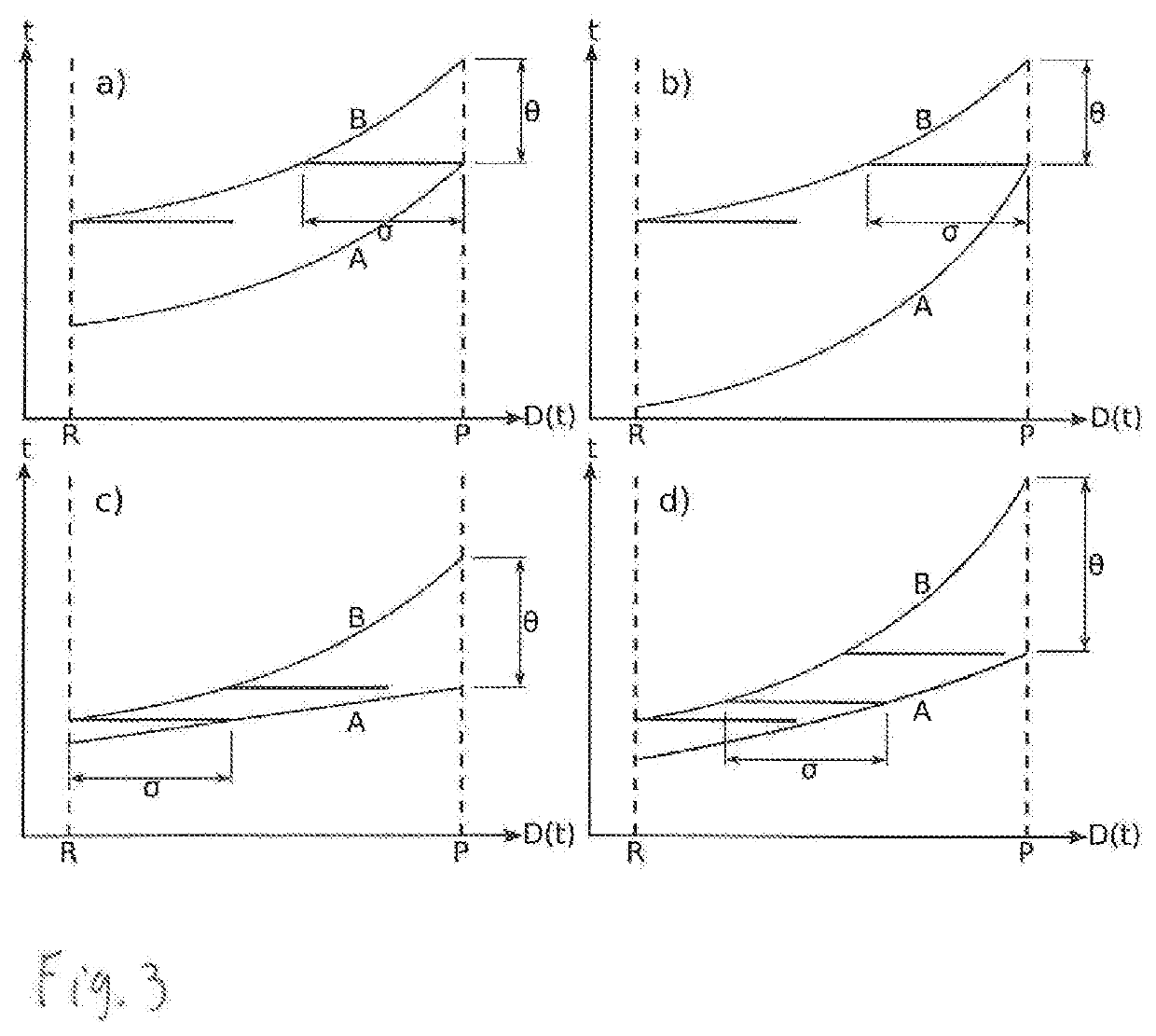Method and device for planning flight trajectories
a flight trajectories and flight path technology, applied in the direction of aircraft traffic control, traffic control systems, instruments, etc., can solve the problems of insufficient speed profiles for aman to assume common speed profiles, and may not ensure minimum separation on continuous parts of the route, so as to achieve the effect of minimization separation
- Summary
- Abstract
- Description
- Claims
- Application Information
AI Technical Summary
Benefits of technology
Problems solved by technology
Method used
Image
Examples
Embodiment Construction
[0142]FIG. 1 shows two trajectories of landing flights, but only the flying-distance D in relation to the flying-time t. Both flights decelerate and, thus, the lines are curved upward. They both end at the same point P, but at times separated by θ.
[0143]The task is to determine θ. The separation S has to be greater or equal to the given a at all points in time. As an example, three separation values S1, S2, and S3 are shown.
[0144]FIG. 1 also illustrates relevant parts of the trajectories. The first point in time, where the minimum separation σ has to be ensured, is when the first flight A reaches the point O, where both flights start to use the same route. At that moment, flight B has not yet reached the start of the common route O, but already has to be separated, i.e., S1≥σ. After flight A lands, separations and trajectories are not used any longer to ensure safe operations. Other measures are more appropriate. Therefore, the moment flight A lands is the last point in time, where ...
PUM
 Login to View More
Login to View More Abstract
Description
Claims
Application Information
 Login to View More
Login to View More - R&D
- Intellectual Property
- Life Sciences
- Materials
- Tech Scout
- Unparalleled Data Quality
- Higher Quality Content
- 60% Fewer Hallucinations
Browse by: Latest US Patents, China's latest patents, Technical Efficacy Thesaurus, Application Domain, Technology Topic, Popular Technical Reports.
© 2025 PatSnap. All rights reserved.Legal|Privacy policy|Modern Slavery Act Transparency Statement|Sitemap|About US| Contact US: help@patsnap.com



